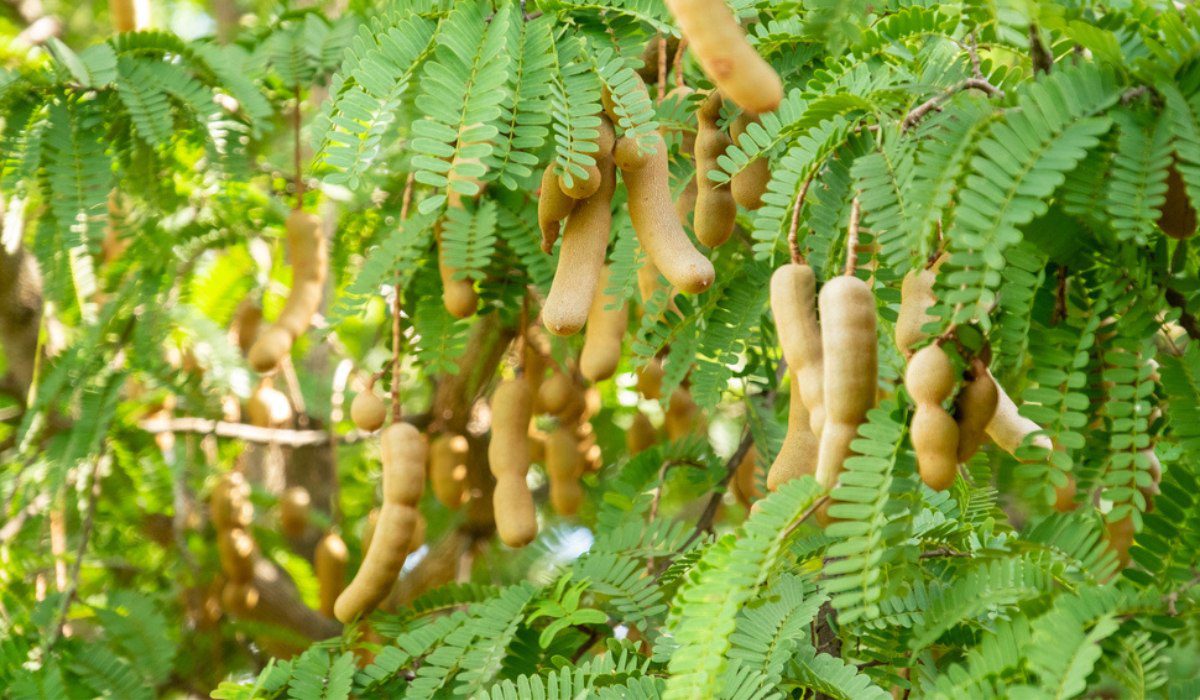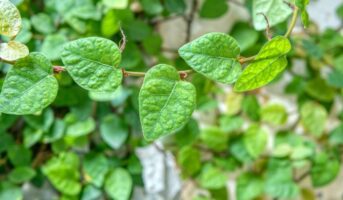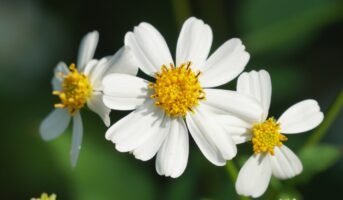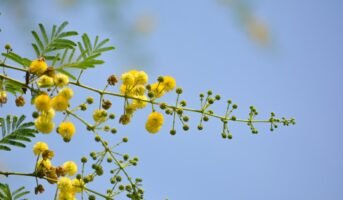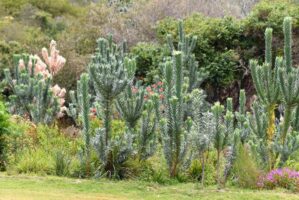Known as a leguminous tree which bears edible fruit, the tamarind tree (Tamarindus indica) is native to the tropics of Africa. This evergreen tree belongs to the pea family (Fabaceae). A tamarind tree grows slowly and hence is long-lived. The trees can stand up to 100 feet tall and live up to 200 years.
The plant is widely grown in the Indian subcontinent (Tamil Nadu, Maharashtra, Karnataka), Central America and Mexico. The tree is cultivated for its versatile pulpy fruit, and wood is used for various carpentry purposes. It also makes up for an excellent ornamental tree.
Tamarind tree: Key facts
| Botanical name | Tamarindus indica |
| Common name | Tamarind, Imli |
| Family | Fabaceae (pea family) |
| Native area | Originated in Madagascar, grown in India, Mexico and Central America |
| Plant type | Tropical evergreen tree |
| Mature size | 65-80 feet |
| Sun exposure | Full sun exposure |
| Soil type | Acidic, well-drained and loamy soil |
| Bloom time | June and July |
| Flower size | 1 inch wide |
| Flower colour | Red and yellow |
| Toxic | Non-toxic |
Tamarind tree: Features
A tamarind (Tamarindus Indica) tree belongs to the pea family (Fabaceae) and is leguminous. It is indigenous to tropical Africa. Today, the tamarind tree is extensively grown in India in areas with enough rainfall, like – Tamil Nadu, Andhra Pradesh, Karnataka, Maharashtra and Odisha. It is also grown in parts of Central America, Mexico, Myanmar, Malaysia and Sri Lanka.
A tamarind tree can grow up to 65-80 feet in height and almost seven metres in circumference. The colour of the tree bark is light grey or brown with horizontal or longitudinal cracks. The leaves can grow up to 15 cm long. The trees sprout small yellow flowers with orange or red streaks one inch long. The tree seeds are dark brown and 1.5 cm long, and the pulp is edible, sweet or sour in flavour. The pulp is rich in D-maltose, D-mannose, and glucose and is an essential condiment used as a flavouring agent or edible fruit.
The fruits are rich in iron, phosphorus and calcium. Its leaves and flowers are also edible. Tamarind seeds are a cheap substitute for cereal starch in the textile industry. Tamarind wood is reddish brown in the shade and is used in furniture, carved items and woodwork. The tree is evergreen and can stand firm for up to 200 years in deep loamy and acidic soil with perfect sun exposure and care.
Tamarind tree: Types
Generally, tamarinds are of two flavours- sweet-flavoured tamarinds that are primarily cultivated in Thailand and sour type that is grown around the globe. India’s most famous varieties of tamarinds are Urigam, PKM 1, DTS 1, Urigam, and Yogeshwari.
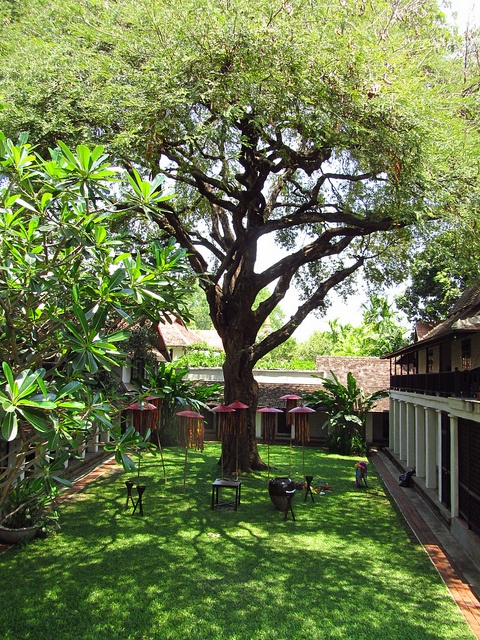
Source: Pinterest
Tamarind tree flowers
The tamarind tree produces small flowers in clusters that are pale yellow in colour. These flowers have around five petals. The tamarind flowers bloom in summer and are fragrant. The flowers of the tamarind tree play an important role in the tree’s development as they get pollinated and helps in formation of tamarind pods.
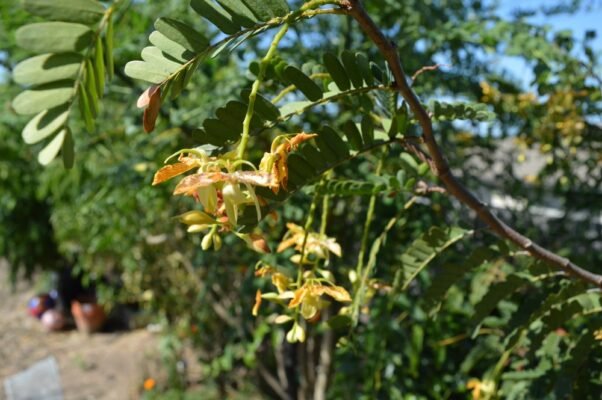
Tamarind tree: How to grow?
A tamarind tree can be propagated using seeds, grafting, air layering, or cuttings.
From seeds
A tamarind tree can be grown from its seeds in the pods but remember, the plants grown by sowing the seeds will not start producing before seven years.
Preparing the seedlings
- Gather pods that have ripened from the tree and lay under the sun to dry.
- The drying process of the pods takes up to a week.
- Open the pod, collect pulp seeds, and wash them in warm water.
- Soak the seeds under the sun for two more days.
- Soak tamarind seeds overnight to speed up the germination process.
- Use warm water to soak the seeds.
- Sow the seeds 25 cm apart in nursery beds or pots.
- Sow the seeds half inches deep in the mix.
- Sprinkle good-quality compost on top of the soil mix.
- Keep the soil moist.
- Germination takes a week to 10 days.
- After seven months, the small plants can be transferred into the main ground.
Planting the tamarind plant on the ground
The suitable months to plant a tamarind tree are from June to early November when the season gets mildly cold. Dig a pit size of 1x1x1 metre at a distance of 10 by 10 metres apart. Carefully remove the small plants from the pot and cut away their dead or rotten roots.
In the ground, dig a hole double the size of the plant’s root ball. Gently lay down the root ball in the dug-up hole. Fill soil around the space to level the ground. Make sure to maintain the small trunk above the earth. Add farm manure to the topsoil of the pits. The plants require regular irrigation and ample sunlight for production.
Growing tamarind trees
For homes with no backyard or limited ground space, you can also try growing a tamarind plant indoors by these steps:
- Gather seeds from the pods and soak them in hot water for 12-24 hours.
- Sow the seeds half inches deep in a moistened, good seed-starting soil mix pot or tray.
- Cover the pot/tray with a plastic sheet and keep it in a heating pad or a warm place.
- Keep spraying water to the mix to moisten the soil, but do not waterlog.
- In around 12-20 days, the seeds will germinate.
Grafting and cutting
Grafting is a process where a part of a plant is inserted into another fruitful plant so that they fuse and grow. This process in a tamarind tree will yield produce in three or five years compared to the seedlings that may start yielding in around 15 years. Use a sturdy mother plant to cut parts for propagation. The cuttings or grafted parts are then fused with a rootstock plant. A rootstock plant must be young, around one year old, and firm. The cut at the plant for grafting must be larger than the cutting that will be inserted in the root plant.
From the mother plant, choose well-aged twigs as cuttings from the periphery of the crown. Or choose flower buds that have yet to burst open. The best period for grafting is March-June (sap period). Once the cutting is collected, make a slot in the root plant and insert the cutting in the middle. Then bandage that area tightly with a plastic sheet and aluminium foil on the top for two weeks.
Growing tips
- Tamarind can be grown in dry to humid regions.
- Vegetatively propagated tamarind trees yield more produce.
- Weeding and hoeing should be practised regularly.
- Keep the saplings away from frost.
- The seedlings grow more under direct sunlight.
- Use bamboo sticks to provide support to young plants.
- Dried and dead leaves must be pruned.
- Young plants need proper irrigation during summer.
- The soil needs a good amount of farmyard manure (FMY).
- The trees grow best in loamy and deep alluvial soils.
- During spring, practice mulching around the tree.
- Usually, the tree requires no pest control as the tree is resistant to diseases.
Tamarind tree: Maintenance
- As the tree matures, it develops a dense canopy that needs to be trimmed down. Sometimes different branches grow from the inclusions between the trunks, which might weaken the tree.
- To regulate its development and keep its shape, trim your tamarind plant frequently. The plant should be stripped of all injured and dead branches.
- During the tamarind’s planting period, water once every week. As fall and winter approach, watering will gradually decrease.
- With sturdy, flexible branches, it is extremely wind-resistant and should be grown in full light. Typically, the tree creates a lovely arching crown that provides a soft shade.
- Pruning must be practised to keep the tree standing strong. Also, remove the ranches and twigs that grow twice in size than the tree’s trunk.
- Remove the dead and destroyed parts of the tree and the rotten leaves and pods occasionally.
Tamarind tree: How to harvest?
In trees grown from seeds, the produce starts appearing in its eighth or tenth year. The yield appears in the fourth year for plants grown by grafting. A fruitful harvest also depends on the maintenance, soil type, and region of the plantation. The months of January-April are the best time for harvesting. A well-kept tree can produce up to 500 kg of ripe pod ready to be used commercially. Pluck out the ripened pods and then sort them according to their quality. For the pods that fall, let them lay until they are ripe and then pick them up for use.
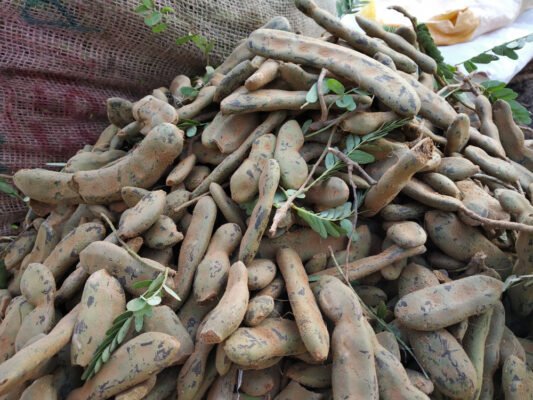
Tamarind health benefits
- Like fruits and timber, tamarind leaves also have many health benefits. Tamarind leaves have been used in Indian food and ayurvedic practices for centuries.
- The leaves have anti-malaria properties, can help control diabetes, treat scurvy, and help heal wounds faster. The flowers are also edible.

Source: Pinterest
Benefits of tamarind
- Tamarind trees are primarily famous and grown for their edible fruits, which have many uses.
- The wood of a tamarind tree is also instrumental in woodwork. The timber has two variations: dark red hard heartwood and softer yellowish sapwood.
- Heartwood is more durable, can resist decay, and is a more versatile tamarind wood than sapwood. It is very narrow and is only found in trees that are large and mature in age. The wood can be used to make wooden items, artwork, furniture, and carvings.
- The heartwood can also retain polish which gives it a shiny effect.
- The lumber can be challenging to work with sometimes, as the density of the wood and its interlocked grains make it difficult for the carpenters to work with it. But due to its high durability, it does make for great furniture like dining tables.
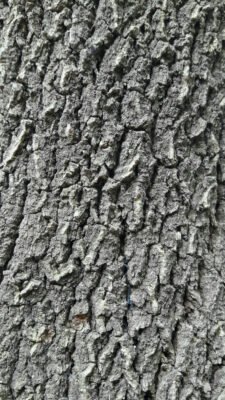
Tamarind recipes
There are a lot of recipes that can be made using tamarind namely Tamarind rasam, tamarind soup, tamarind chutney, tamarind sambar.
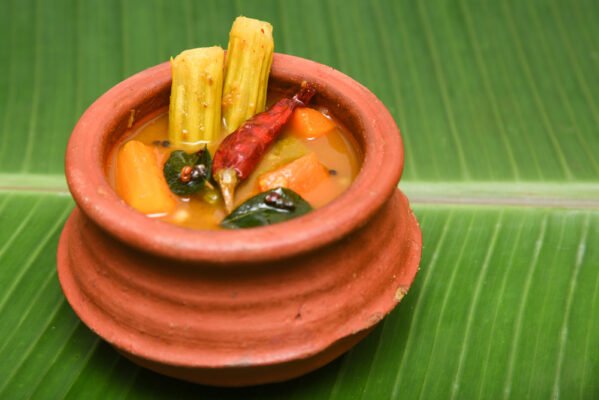
To make sambar, soak tamarind in water for sometime. Remove the waste and use the extracted pulp. In a pan, fry vegetables like onion, capsicum, okra, and then add the tamarind pulp, some water, salt to taste, sambar power, hing and turmeric powder. Give it a boil. Add tur dal to this and give a tadka of mustard seeds and curry leaves.
Tamarind for weight loss
Tamarind is rich in hydroxy citric acid that helps in weight loss. Also, consumption of tamarind can reduce inflammation, lower blood sugar levels and strengthen bones.
Tamarind tree: How much does a tamarind tree yield?
Planting tamarind trees may not be a profitable model for the farmers, but it is a tree that is easily maintainable and has dense foliage.
Farmers can plant up to 400 trees per acre if trees are cultivated with great variety and proper maintenance. A tamarind plant can yield as much as 260 kilos of fruit pods annually, averaging around 11 tons per acre.
Tamarind tree: Are they toxic in nature?
Tamarind fruits have proven to be non-toxic. In contradiction, they have significant health benefits. They are also safe for children. However, avoiding the fruit in medical cases such as diarrhoea is best. Tamarind leaves fluids are also non-toxic. They may be slightly irritating due to their citric nature. One must consume the edible parts of the tree in limit and proper treatment to avoid side effects.
FAQs
Why is planting a tamarind tree in your house wrong, according to vaastu?
Although the tree has multiple uses, growing the tamarind tree in your home must be avoided as it is said to attract negative energies and evil spirits.
Is total sun exposure required for a tamarind tree?
For best results, planting the tree under full sunlight is beneficial. The dense foliage also casts excellent shade, and the branches are wind-resistant.
When does a tamarind tree fully mature?
It takes a tamarind tree 14 years to grow fully.
| Got any questions or point of view on our article? We would love to hear from you. Write to our Editor-in-Chief Jhumur Ghosh at [email protected] |
Housing News Desk is the news desk of leading online real estate portal, Housing.com. Housing News Desk focuses on a variety of topics such as real estate laws, taxes, current news, property trends, home loans, rentals, décor, green homes, home improvement, etc. The main objective of the news desk, is to cover the real estate sector from the perspective of providing information that is useful to the end-user.
Facebook: https://www.facebook.com/housing.com/
Twitter: https://twitter.com/Housing
Email: [email protected]
